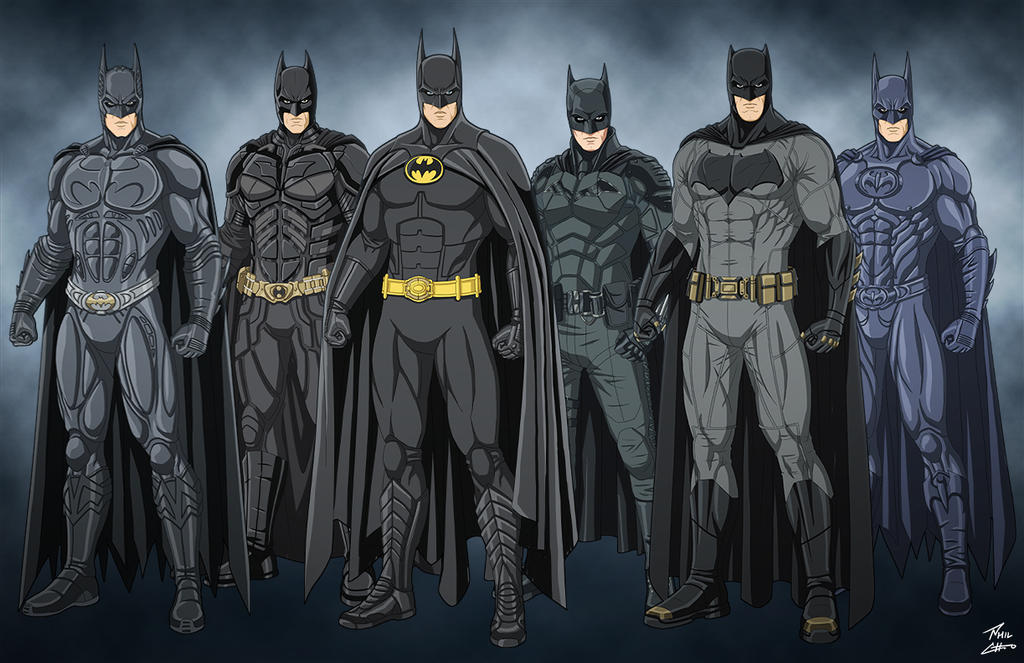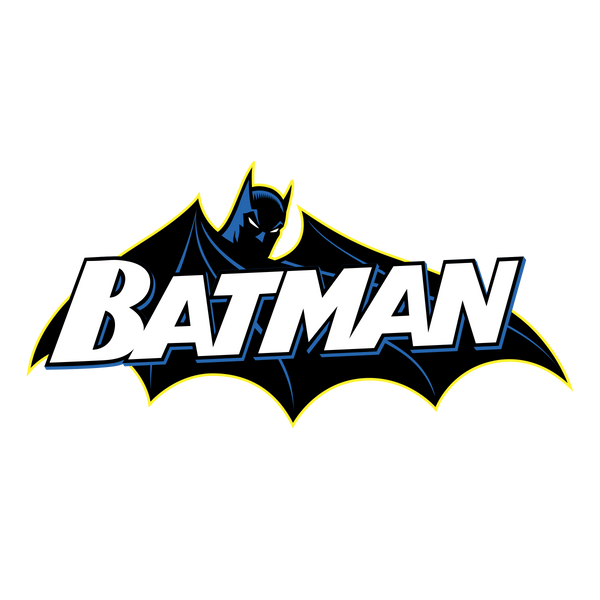
Batman in the DC Multiverse: All Major Variants
Batman is more than just Gotham's lone hero. In the DC Comics Extended Universe, there are countless alternate versions of the Dark Knight, each embodying a different side of his personality, choices, or tragedies. The DC Multiverse allows writers to explore new stories where Bruce Wayne doesn't always follow the same destiny... and sometimes, it's not even Bruce Wayne behind the mask.
In this article, we take you on a journey through parallel Earths , between chilling dystopias, heroic alternate realities, and nightmarish creations. This comprehensive guide will immerse you in the most striking variants of Batman, from the legendary classic Dark Knight to the darkest figures from the lands of the Dark Multiverse .
1. Batman (Earth-0): The Original Dark Knight
Let's start with the canonical version: the Batman of Earth-0 , that is, the one we all know. Bruce Wayne, traumatized by the murder of his parents, becomes a nocturnal vigilante determined to eradicate crime. He founds the Bat-Family , fights legendary enemies like the Joker or Two-Face, and is part of the Justice League.
But beyond this solid foundation, the Multiverse shakes up all the benchmarks. And that's where things get exciting...
2. Flashpoint's Batman: The Father Turned Vigilante
What if it wasn't Bruce Wayne who survived, but his father, Thomas Wayne? This is the terrible reality of the Flashpoint universe. In this alternate timeline, Bruce dies in Crime Alley , pushing his father to become a brutal, armed, and ruthless Batman.
- Thomas Wayne kills his enemies, unlike the traditional Batman.
- Martha Wayne , driven mad by grief, becomes a version of the Joker in this tragic reality.
- This Batman embodies pure vengeance, devoid of hope or redemption.
This character has marked readers with his darkness and was even adapted into the animated film Justice League: The Flashpoint Paradox .
3. Batman Beyond: The Future of the Myth
In a futuristic Gotham dominated by technology, Terry McGinnis becomes the new Batman, under the tutelage of an aging Bruce Wayne. High-tech armor, advanced gadgets, and a cyberpunk universe breathe new life into the myth.
Batman Beyond is a cult series, both in animation and comics. It explores the passing of the torch, the difficulty of inheriting a burden as heavy as that of the Dark Knight, and the excesses of modern society.
4. Red Son Batman: Soviet Resistance
In the Superman: Red Son universe, Kal-El lands in the USSR and becomes a weapon of the Soviet regime. Batman, in this alternate world, then becomes a symbol of resistance , an insurgent fighting against Superman's oppressive power.
His look changes: a chapka, thick earflaps, a dynamite belt... and his methods are radical. He embodies the struggle of man against the divine dictatorship embodied by Superman. A fascinating and symbolic version of the character, acclaimed for its narrative power.
5. The Batman Who Laughs: nightmarish fusion
If there's one version that's chilling, it's The Batman Who Laughs . Hailing from the Dark Multiverse, this being is a terrifying fusion of Batman and the Joker. In his reality, Bruce Wayne kills the Joker... but is infected by a gas that slowly transforms him into a twisted version of himself.
- He retains Batman's strategic intelligence, but adopts the Joker's sadistic cruelty.
- He eliminates all members of the Bat-Family in his world.
- He becomes the Multiverse's worst nightmare, leading the Dark Knights .
This character is central to the Dark Nights: Metal story arc and perfectly embodies the ultimate corruption of a hero. A topic explored in detail in our article on the scariest Batman .
6. Lord Justice Batman (Lord Batman)
In the Justice Lords universe, Batman lives in a world where Superman has become a dictator after the death of Lois Lane. This Batman, while hostile to tyranny, collaborates with the authoritarian regime. He embodies the version of the hero who chooses security over freedom.
This version was popularized by the Justice League animated series and demonstrates how much Batman can compromise himself if he thinks he is protecting the population.
7. Batmage: the wizard version
In some medieval realities, Bruce Wayne is reimagined as a dark magician: the Batmage . In the Batman: Dark Knight of the Round Table or DC's Dark Knights of Steel series, he operates in fantasy realms, manipulating arcane magic rather than gadgets.
We find the essence of the character - solitary, vigilante, determined - but transposed into a world where magic replaces technology.
A concept developed in our article on Batman in a medieval universe .
8. Batman Amalgam: Marvel/DC fusion
For the Amalgam Comics event, DC and Marvel merged several of their characters. The result? Dark Claw , a hybrid between Batman and Wolverine. Adamantium claws, black cape, feline style… this version embodies pure rage and stalking.
A cult curiosity for crossover fans, which we also discuss in our article on the craziest Batman crossovers .
9. Flashpoint Batman: Thomas Wayne, the vengeful father
In the Flashpoint universe, it is Thomas Wayne—not Bruce—who survives the Crime Alley tragedy. Consumed by grief and rage, he becomes a more brutal Batman, unapologetic about killing his enemies. This version is more cynical, older, and far more dangerous.
He embodies a moving facet of the myth: a father who was never able to mourn his son. This Batman reappears in Flashpoint Beyond and in the film The Flash (2023), played by Jeffrey Dean Morgan in certain persistent rumors of the DCEU.
10. Batman Beyond: The Future of the Dark Knight
In the future of Neo-Gotham , Bruce Wayne is old and weakened. He passes the torch to a young rebel, Terry McGinnis , who becomes the new Batman. Equipped with a high-tech suit, he fights against a new generation of criminals.
This Batman of the future has become a cult classic thanks to the animated series Batman Beyond , and has since been integrated into the canonical DC comics. For many, Terry represents a true evolution of the myth, proving that Batman's legacy can outlive its creator. We discuss this in detail in our article on Bruce Wayne's legitimate successor .
11. Batman Vampire: The Eternal Predator
In a cult trilogy by Doug Moench and Kelley Jones ( Red Rain ), Batman becomes a vampire to defeat Dracula. This supernatural version is both terrifying and melancholic: he fights his bloodlust while protecting Gotham.
This Batman evolves in an exaggerated gothic atmosphere, with a macabre aesthetic. It is a tribute to the character's dark roots, inspired by goth culture and classic horror cinema.
12. Batman Earth-One: Realism and Vulnerability
The Earth-One series, written by Geoff Johns, offers a realistic reinterpretation of the Dark Knight. This Bruce Wayne is flawed, impulsive, and less experienced. He only becomes Batman through failure, doubt, and self-questioning.
This version highlights the hero's human weaknesses and also redefines his allies. Alfred is a former soldier, and the Penguin is a corrupt politician. A modern retelling perfect for newcomers, which we delve into in more depth in our article dedicated to Earth-One.
13. Batman White Knight: When the Joker Becomes the Hero
In this alternate universe by Sean Murphy, it is the Joker—cured of his madness—who becomes a vigilante. Jack Napier wants to save Gotham from the brutality of a Batman perceived as a public danger.
This reverse narrative poses a fascinating question: Is Batman still a hero or a threat?
14. Batman vs. Batman: When the versions clash
The Multiverse has allowed for stories where multiple Batmans meet, cooperate... or clash. This is the case in the crossover Dark Nights: Death Metal or in the Batman Multiverse arc, where dozens of versions unite to face a common enemy... or oppose each other in ideological struggles.
These stories reflect on the Dark Knight's identity, his limitations, and his resilience. They illustrate that, whatever his form, Batman remains driven by a single obsession: justice.
Conclusion: an eternal myth with a thousand faces
The DC Multiverse hasn't just multiplied Batmans: it's explored every possible facet of the myth. From the ruthless vigilante to the tragic vampire, from the grieving father to the aging mentor, each version reveals a truth about what the Dark Knight represents.
This abundance of variations doesn't dilute the hero's essence. On the contrary, it reinforces it: Batman is an idea, a legend that transcends time and worlds . And it is precisely this narrative richness that makes him one of the most fascinating characters in all of pop culture.
